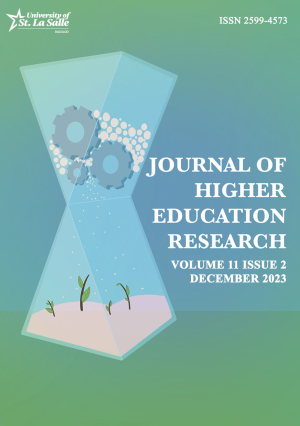Kinesiophobia, Physical Self-Efficacy, and Physical Activity Among Patients with Peritoneal Dialysis
https://doi.org/10.70228/YJHER2024025
Cite this article Read this article
ABSTRACT
The study investigated the relationship between the levels of kinesiophobia, physical exercise, self-efficacy, and physical activity among patients with peritoneal dialysis in China, addressing a critical knowledge gap in this population. It utilized a quantitative descriptive correlational design with a standardized questionnaire adopted from the Simplified Chinese (SC) version of the Tampa Scale for Kinesiophobia (TSK), the Chinese version of the Exercise Self-Efficacy Scale, and the International Physical Activity Questionnaire (Short Form) Chinese version (IPAQ-C). Data were collected face-to-face on-site patients from the hospital and online for patients who did not come from the hospital. Statistical analyses, such as Analysis of Variance (ANOVA), Mann-Whitney U test, and Spearman's Rho correlation, revealed associations and differences among patient demographics and health-related variables. The study found moderate levels of kinesiophobia among 191 peritoneal dialysis patients, most of whom were male (57.1%), aged 51-60, and married. There were significant correlations between kinesiophobia and physical activity and associations between physical activity and age groups. Notably, patients had high overall physical self-efficacy and moderate physical activity levels, with differences seen depending on treatment duration. The study emphasizes the importance of tailored interventions that address demographic and psychological factors, advocating for an integrated model that combines strategies to increase physical activity while also reducing kinesiophobia and necessitating that healthcare providers prioritize personalized exercise plans, multidisciplinary care involving psychologists and physiotherapists and comprehensive educational initiatives aimed at specific demographic groups. Through this integrated approach, healthcare teams can effectively assist peritoneal dialysis patients in overcoming barriers to physical activity participation, thereby improving overall health and well-being.
Keywords: kinesiophobia, physical activity, self-efficacy, peritoneal dialysis, end-stage renal disease

Volume 11 Issue 2, 2023 EDITION
Published 2023
Editor's Note
Dear Readers, We are pleased to present the Volume 11, Issue 2 (2023) of the Journal of Higher Education Research. This issue brings together a diverse collection of studies that address significant topics in education, healthcare, and well-being, showcasing research that is both relevant and impactful. This issue includes studies that highlight the importance of psychosocial factors in learning and practice. Cao and Espinosa examine how parenting styles influence study engagement among vocational nursing students, with self-compassion potentially mediating this relationship. Meanwhile, Yanling and Garcia shed light on the factors contributing to death anxiety among ICU nurses, emphasizing the need for tailored mental health interventions to strengthen the self-efficacy of ICU nurses. Similarly, Xing and Lachica highlight the growing demand for death education, pointing on the necessity of preparing nursing students for end-of-life care. From the perspective of patient care, Wang and Dolendo investigate how the fear of movement, or kinesiophobia, physical exercise and self-efficacy affect patients undergoing peritoneal dialysis, showcasing its impact on the quality of life of the patients. Chen and Cadena evaluate the effectiveness of a modified simulation tool to improve the skills of anesthesia nurses, emphasizing the value of hands-on training in healthcare. Mental health is another key theme in this issue. Li and Diva share the lived experiences of patients using nonpharmacological approaches to manage anxiety and depression related to chronic gastritis. This study proposes a model to assist the patients in developing appropriate behavioral adaptations and self-management skills and assess the effectiveness of strategies. Yang and Chua identify predictors of blood pressure in hypertensive patients, contributing to better hypertension management program. Lastly, two studies explore ways to enhance quality of life. Shen and Garcia investigate how square dancing improves sleep and well-being among middle-aged and older women, highlighting the importance of community-based physical activities. Song and Lachica report findings on the role of meaning in life and coping styles in supporting breast cancer patients undergoing chemotherapy. We are deeply grateful to our authors for their valuable contributions and to our reviewers for their time and expertise in refining this issue. A special thanks to the staff and Dr. Lota Largavista, Director of the Publication and Engagement Office, for their unwavering support in producing this volume. We hope you find this issue thought-provoking and useful in your professional practice and academic endeavors. Sincerely, JOVAL N. MARTINEZ Editor-in-Chief


